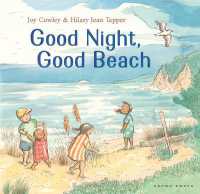Full Description
Because the drive toward external assessment speaks almost exclusively in terms of standardized testing, we need to be reminded of the internal purposes of assessment: measuring learning for both student and teacher so that instruction can be adjusted and improved. This book is written for college instructors who are striving to creatively change assessment practice to better reflect learner-centered teaching. It is intended to consider not only the multiple ways in which individuals learn content, but also the multiple avenues to assessment the variety of learning styles demands. Creative assessment is defined here as assessments that spin, twist, and reform what might be a standard kind of assessment in an ordinary classroom. Instructors should use these examples of creative assessment as starting points, and as the beginnings of an internal discussion on what matters most in the courses they teach: What components of each course count the most for solving a range of problems in the discipline? If facts are important, and they usually are, how can they be used to support a flexible approach to thinking, solving, considering options, and gathering and interpreting evidence?What are the facts not telling us?
Contents
About the Authors. Acknowledgments. IntroductionOpportunities Make Sense in a World Where Assessment of Factual Knowledge Has Taken Hold (Elizabeth Gayton). 1. Why Creative Assessment (Richard J. Mezeske, Barbara A. Mezeske)? 2. Concept Mapping: Assessing Pre-Service Teachers' Understanding and Knowledge (Richard J. Mezeske). 3. Getting Creative in a Required Course: Variable Grading, Learning Logs, and Authentic Testing (Barbara A. Mezeske). 4. "From Now On You'll Be History": The Transition from Memorization to Analysis (Janis M. Gibbs). 5. Resurrecting the Lab Practical (Kathy Winnett-Murray). 6. Exams as Learning Experiences: One Nutty Idea After Another (Thomas Smith). 7. Web-Based Instruction and Assessment in a German Culture Course (Lee Forester). 8. Challenging Students (and the Professor) to Use All of Their Brains: A Semester-Long Exercise in Thinking Styles and Synthesis (Elizabeth A. Trembley). 9. Demonstrating Synthesis: Technology Assessment Tools for Field Experience Learning (Susan Cherup). 10. Assessing an Engineering Design Team Project: Build It, and They Will Come (Michael Misovich and Roger Veldman). 11. Tracking Learning Over Time in Health Care Education Using Clinical Proficiency Transcripts (Richard Ray). 12. Verbing the Noun: Grammar in Action (Rhoda Janzen). 13. Hands-On Assessment Can Work for Pre-Service Elementary Teachers (Mary DeYoung). 14. Building Assignments Within Community: Assessment in the Real World (David B. Schock). Conclusion: Do Classroom Assessment Techniques Improve Student Learning and Fulfill Larger Assessment Goals (Scott VanderStoep and Carla Reyes). Index.







